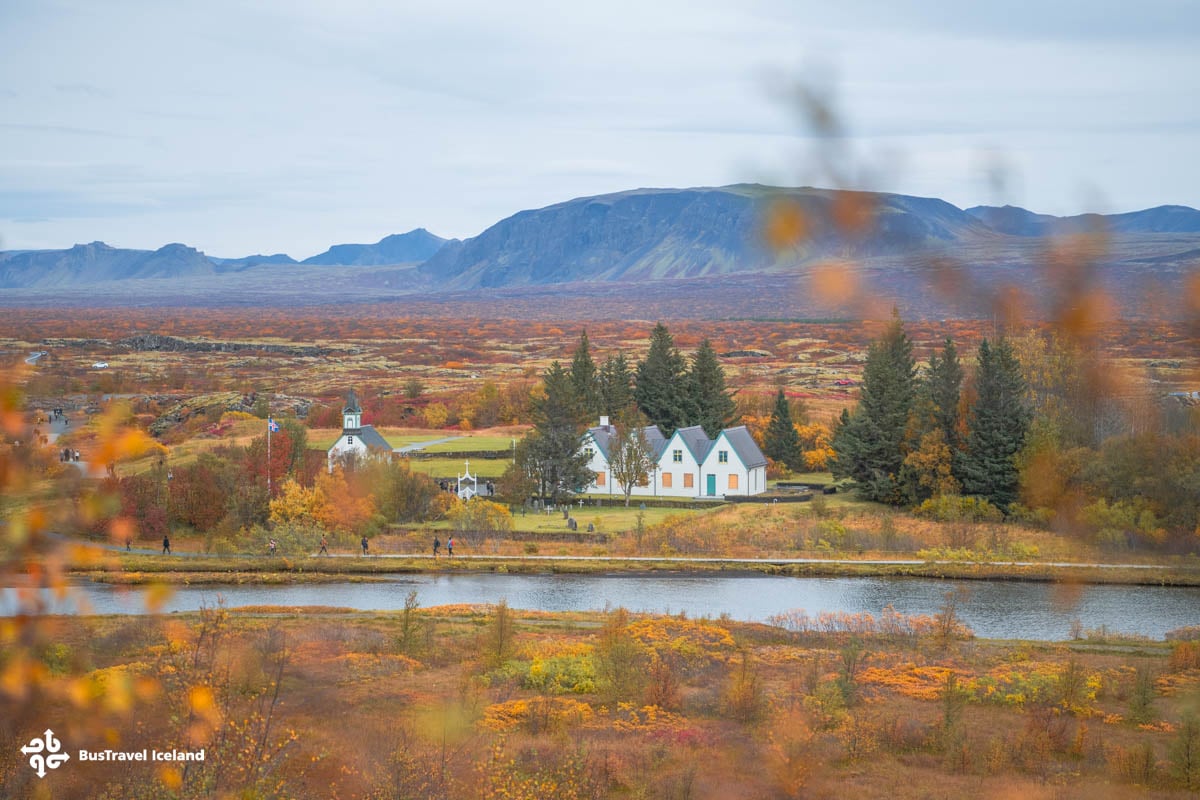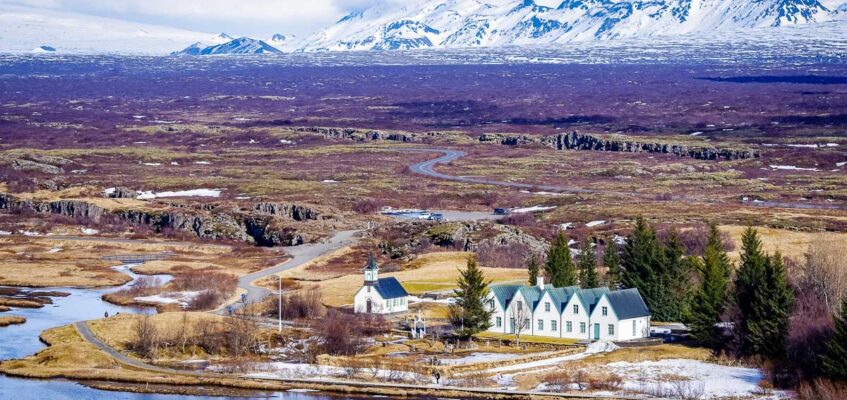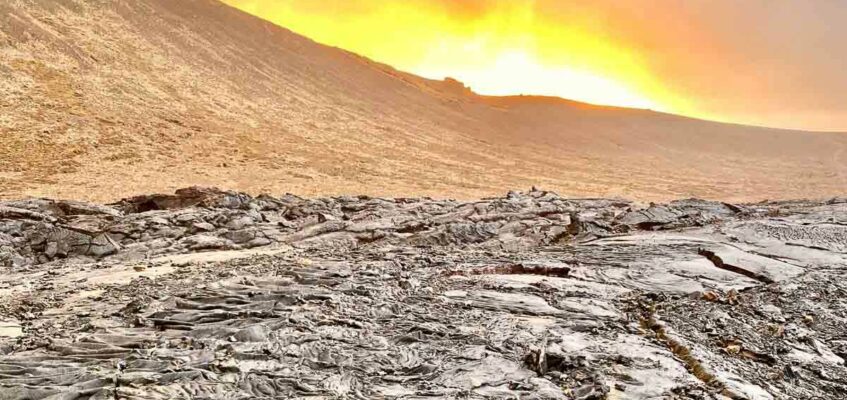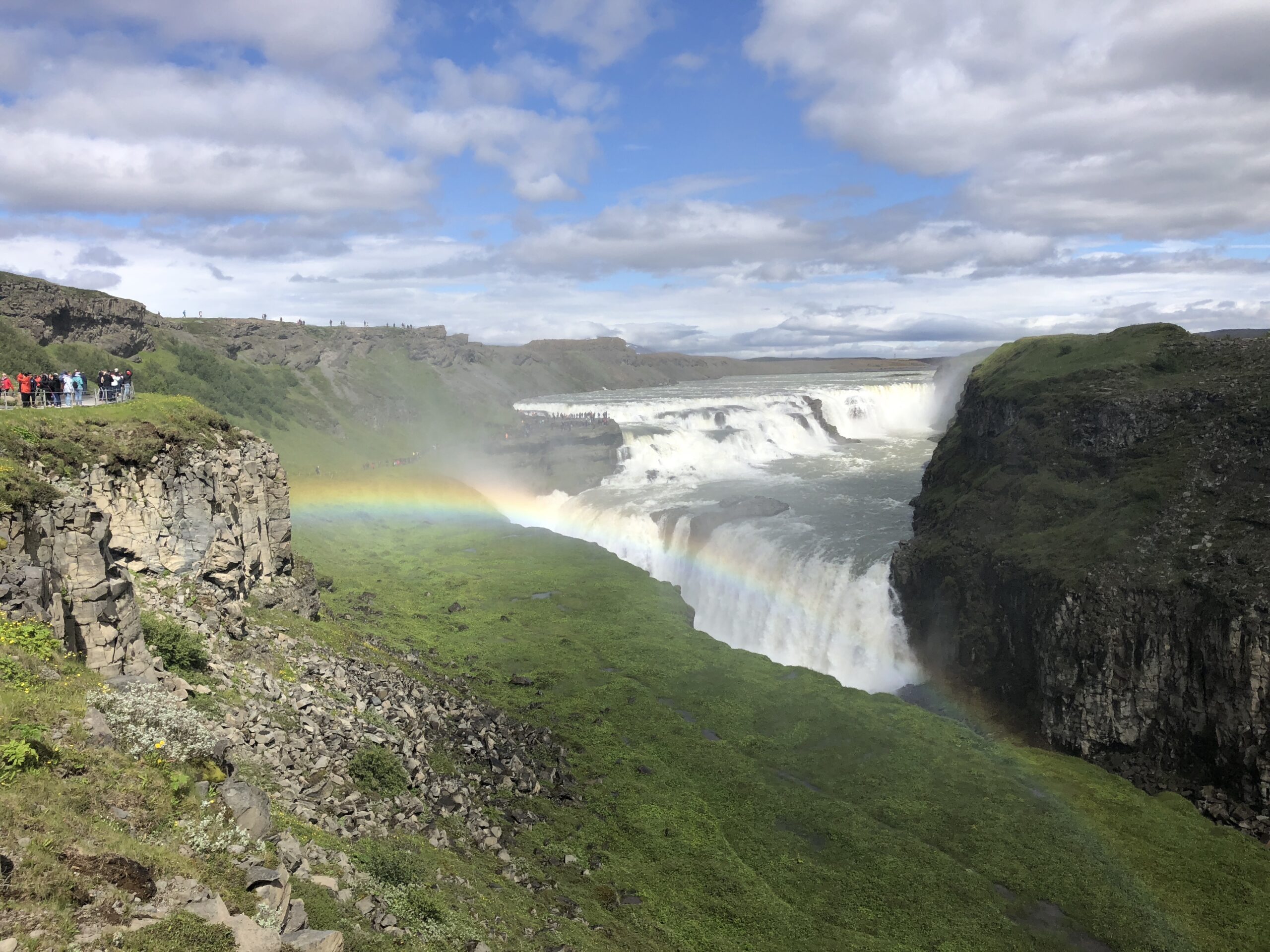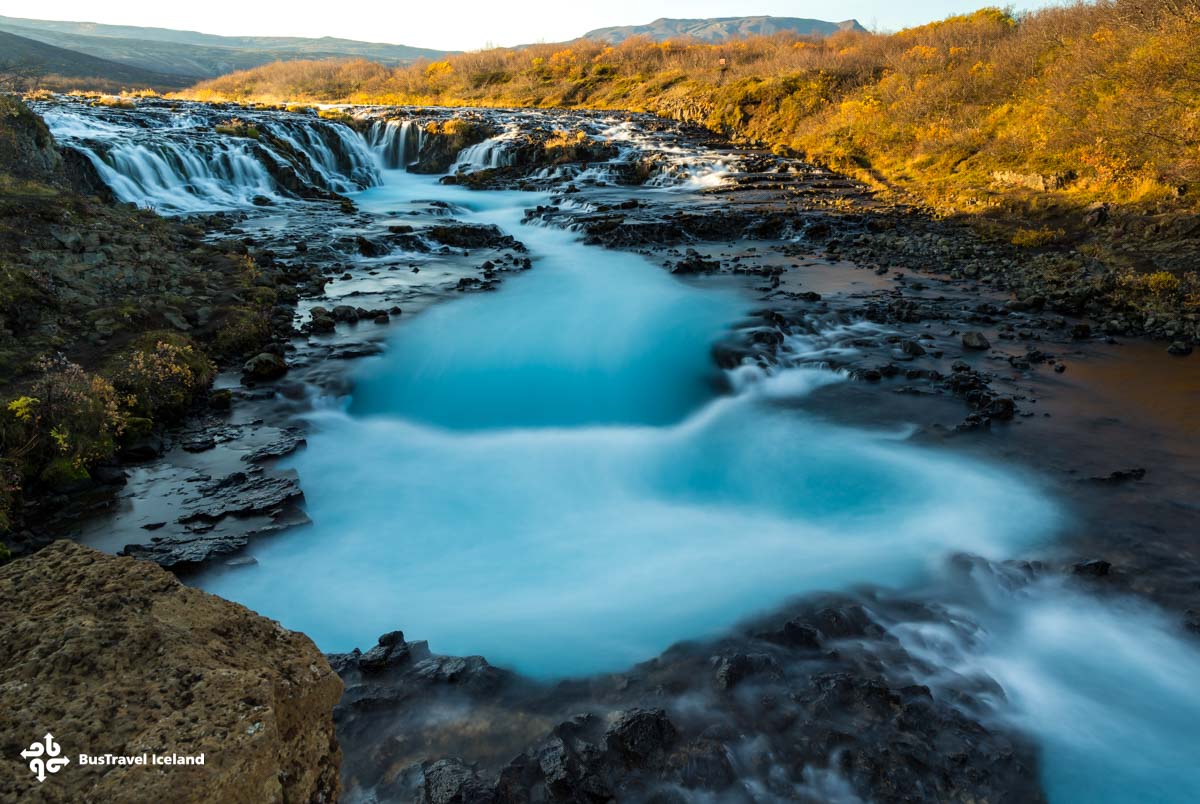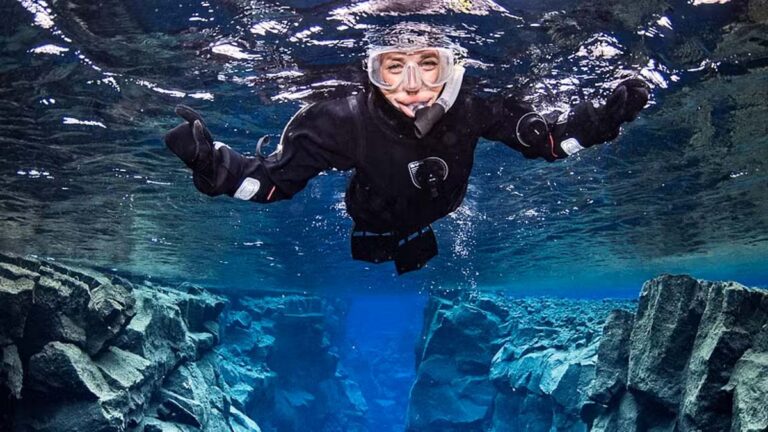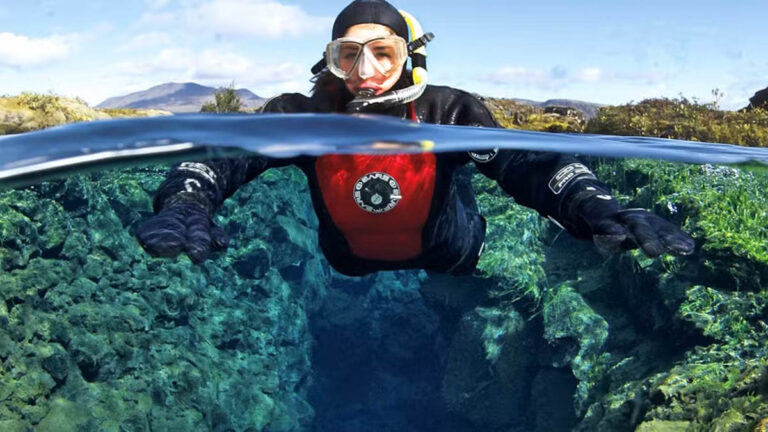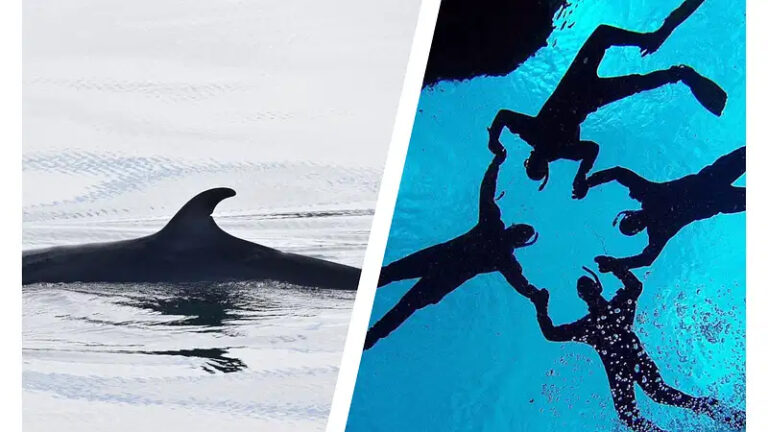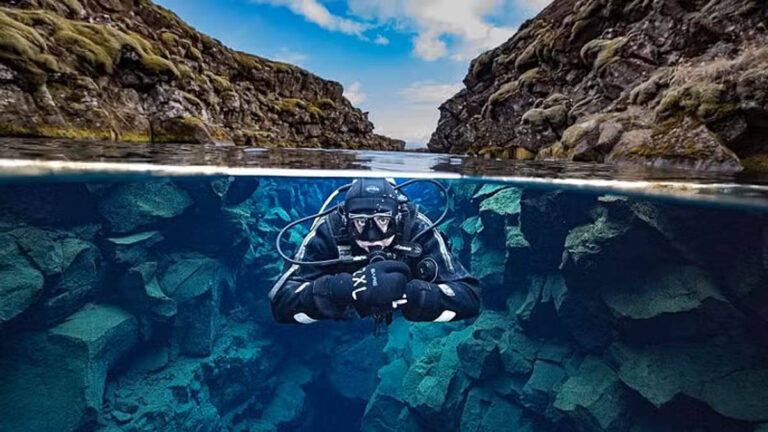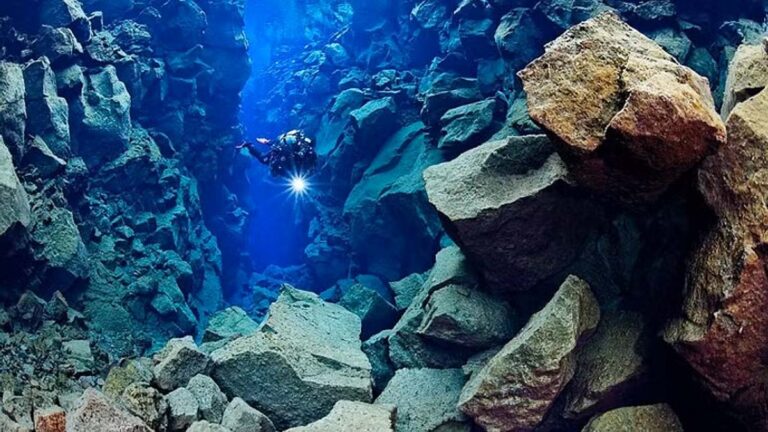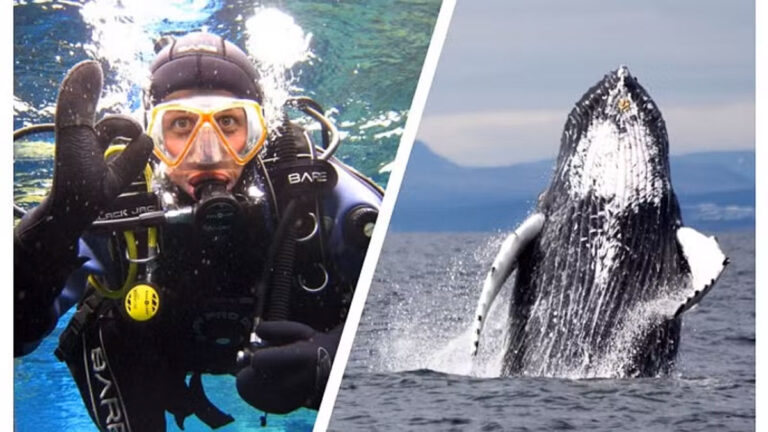Silfra Fissure: Exploring the Crystal-Clear Waters Between Continents
- Golden Circle Iceland
- 11 Aug 2023
Silfra Fissure, a natural wonder within Thingvellir National Park along Iceland's Golden Circle Route, mesmerizes with its crystal-clear waters and the convergence of North American and Eurasian tectonic plates, inviting immersion in its enchanting depths.
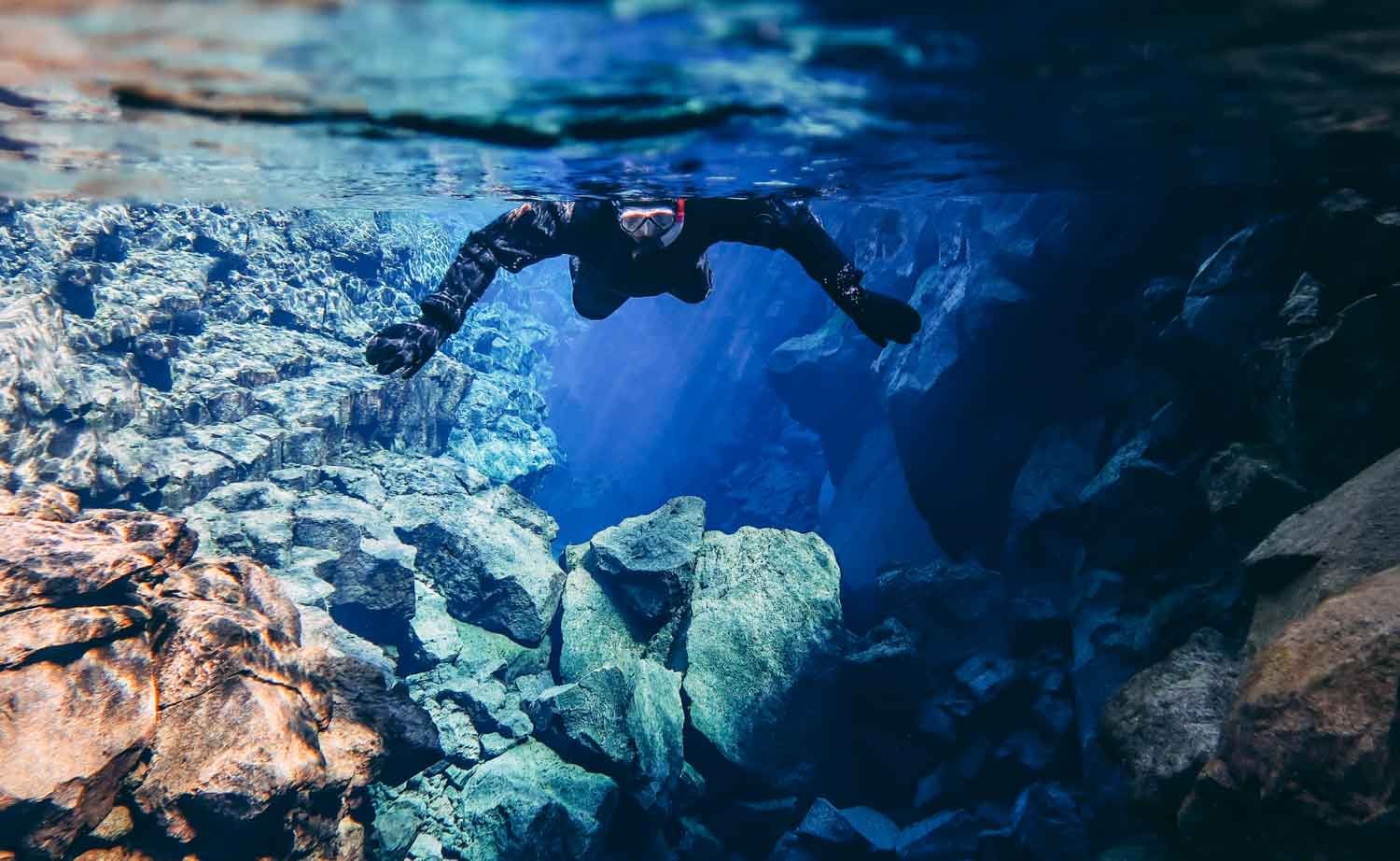
Silfra Fissure’s Geological Significance
Before exploring the depths of Silfra Fissure, it’s crucial to understand its unique geological importance. Here, you witness the direct results of continental drift, making Silfra not only a marvel of geology but also a rare natural phenomenon.
How was Silfra Fissure Formed
Silfra fissure formed out of dramatic earth movements. As the Mid-Atlantic Ridge, which marks the tectonic boundary between the Eurasian and North American tectonic plates, continues to diverge, tension within the Earth’s crust increases. When this tension releases, it results in the formation of fissures like Silfra. Our very observation of Silfra proves the ongoing process of continental drift.
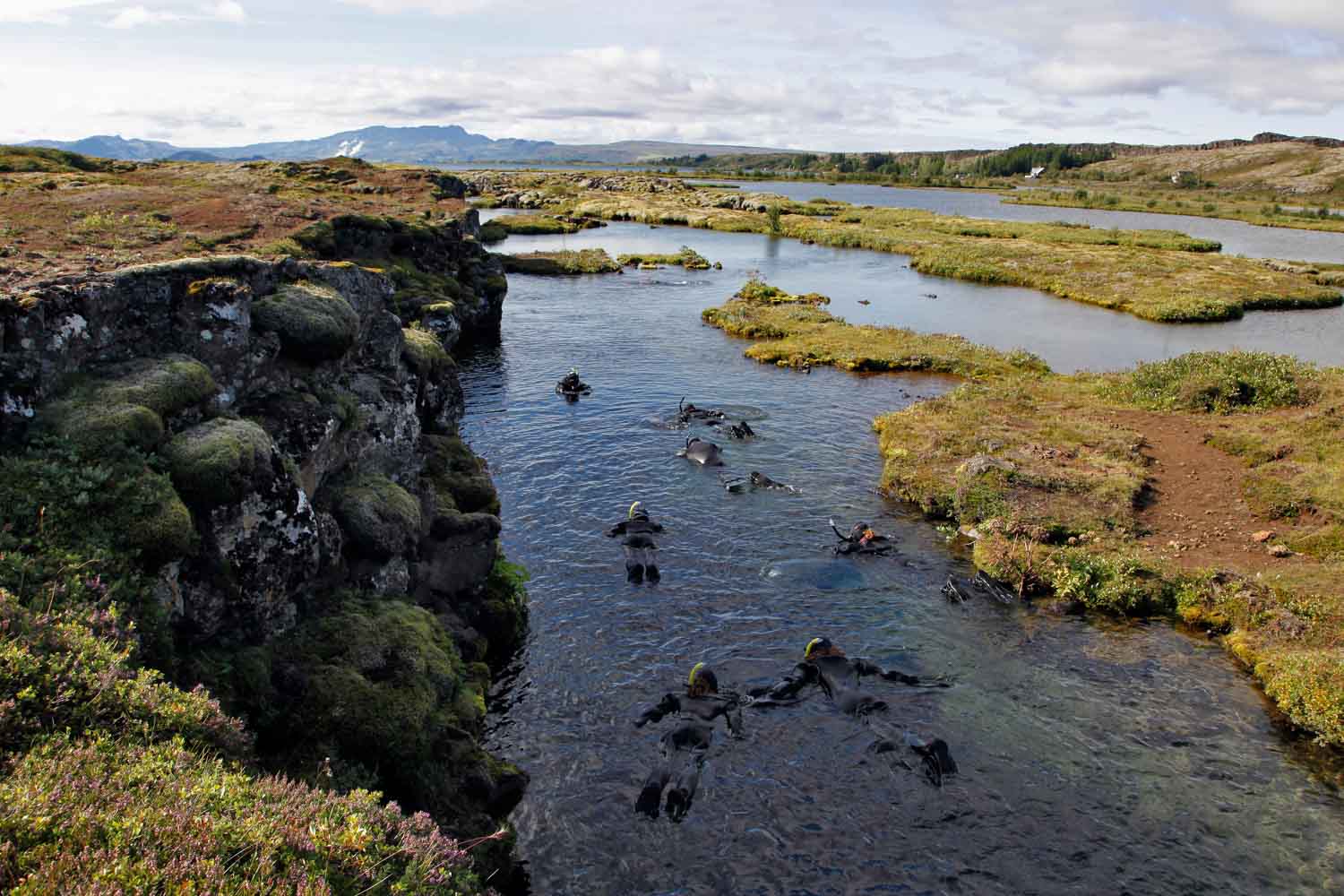
Tectonic Plate Interaction
You’ll get a much clearer picture of how tectonic plates interact when you check out the Silfra Fissure. It lies directly on the tectonic boundary, with the North American plate to the west and the Eurasian plate to the east. This area is a striking physical representation of the boundary where the North American and Eurasian tectonic plates meet and slowly drift apart, typically at a rate of around 2 cm (0.79 in) per year.
Effects of Earthquakes
Earthquakes often accentuate the rift at Silfra. They are a testament to how the continuous divergent movement of the Eurasian and North American plates can shape the geology of an area. It was after a series of earthquakes in 1789 that the fissure opened significantly, allowing for the visibility and accessibility of Silfra as we know it today. The earthquakes showcase the dynamic nature of Silfra and its constant evolution.
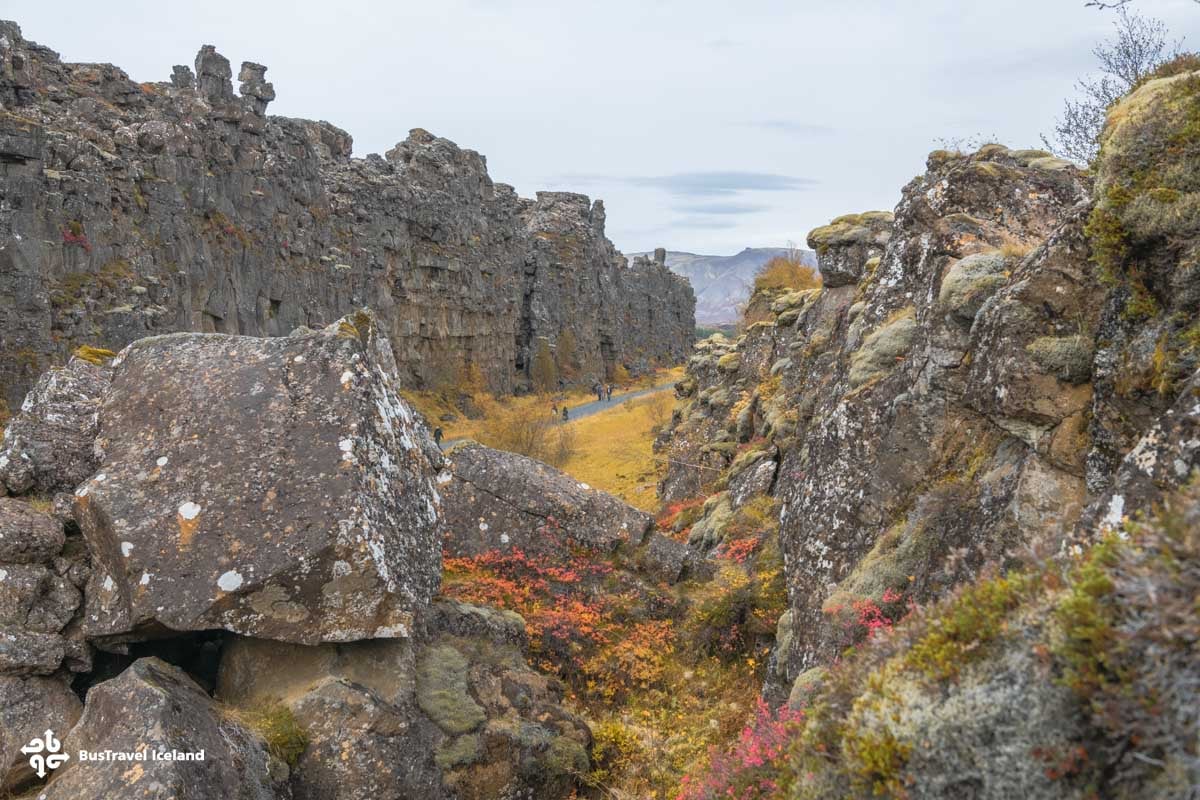
Discover the Enchanting Silfra Fissure
Silfra Fissure is a unique underwater ravine located in Þingvellir National Park, known for its crystal-clear water and the chance to dive between two continental plates.
Silfra Cathedral
The Silfra Cathedral is celebrated for its remarkable depth and extraordinary clarity. Here, visibility can reach up to 100 meters, granting us a mesmerizing view into the depths of the fissure’s abyss. At its deepest point, the Cathedral plunges to 20 meters, while its length extends for approximately 100 meters. It is surrounded by imposing rock formations that emphasize the grandeur of this underwater canyon.
Silfra Hall
Proceeding towards Silfra Hall, the rift widens, revealing a spacious area flanked by the fissure’s rugged walls. This section is slightly shallower than the Cathedral but is no less magnificent. Large boulders and rocks that have fallen from the canyon walls over time dot the landscape here, offering a textured backdrop for divers and snorkelers.
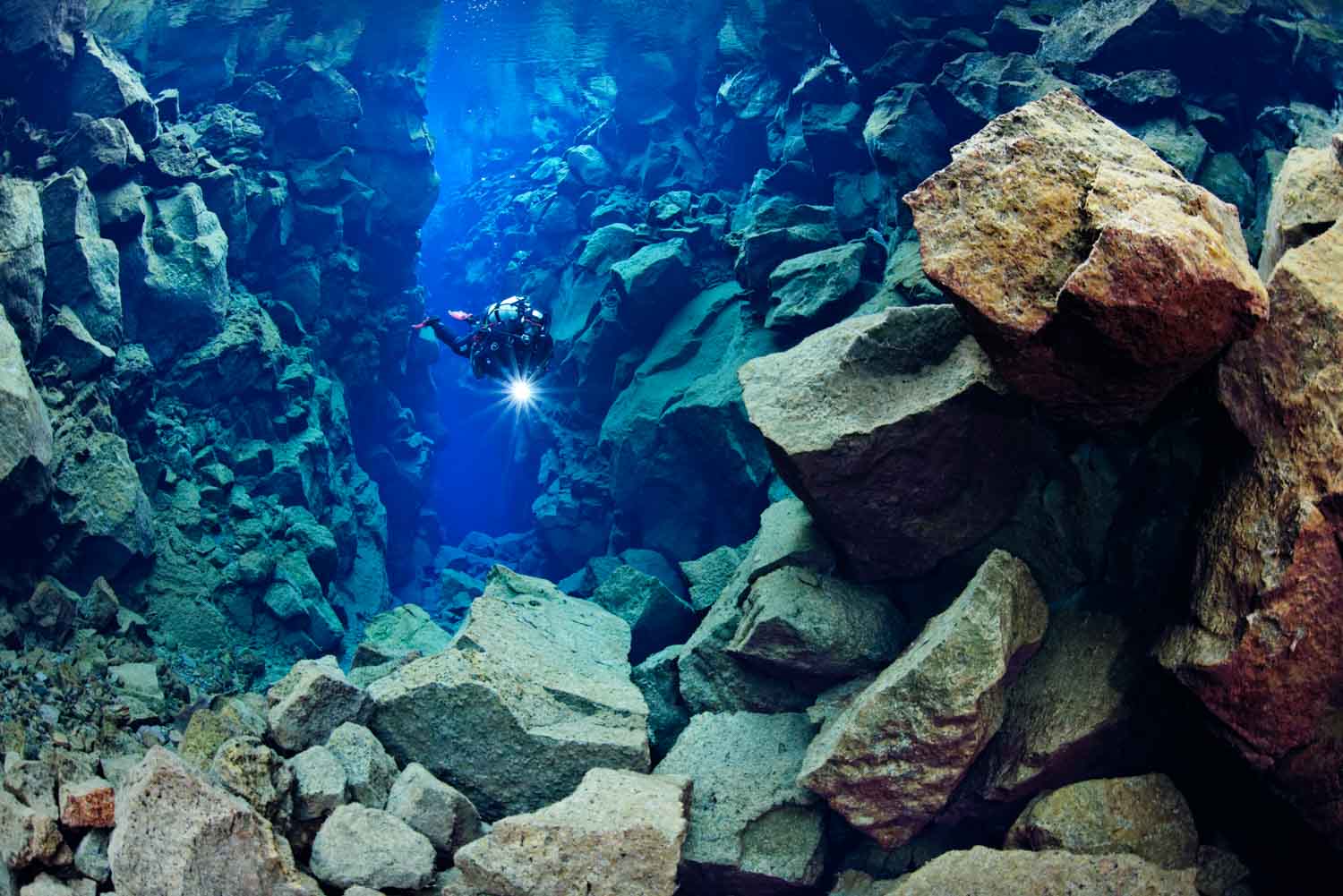
Silfra Lagoon
At the end of the journey through Silfra Fissure is the Silfra Lagoon. This tranquil basin is the final section where the water is a bit warmer, usually around 2-4 degrees Celsius (35.6 – 39.2 °F). The lagoon’s serene atmosphere and the gently waving aquatic plants provide a peaceful conclusion to the remarkable underwater journey.
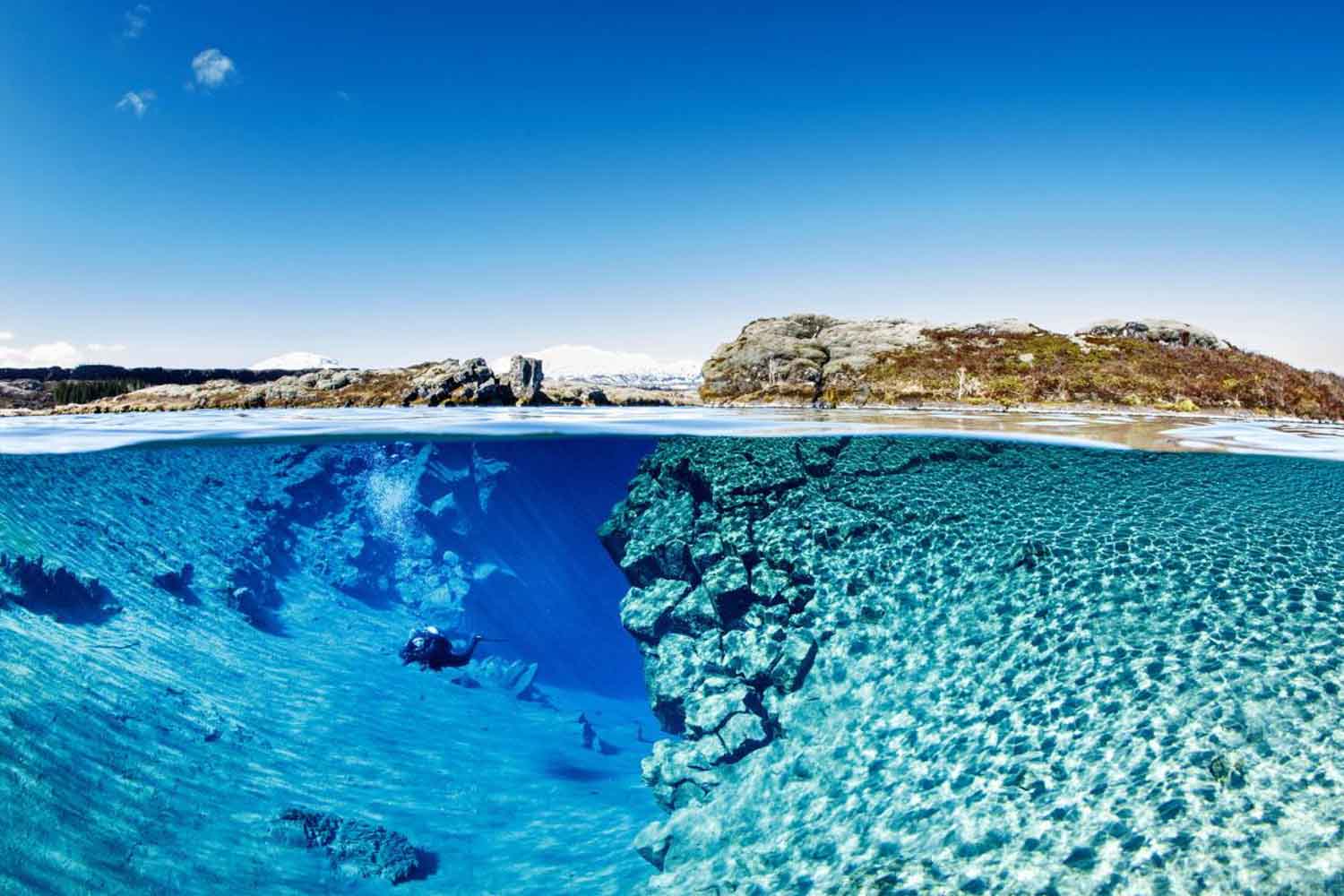
Silfra Crack
Silfra Crack is the narrowest portion of the fissure, where the North American and Eurasian tectonic plates are within arms reach of one another. This unique spot allows us the thrilling opportunity to touch two continents at once, a rare geological feature that adds to the surreal nature of diving in Silfra Fissure.
Diving & Snorkeling in Silfra
Diving in Silfra offers an unparalleled underwater experience where we can dive between two tectonic plates with exceptional clarity. It is a unique opportunity that requires specific conditions to ensure a safe and memorable experience.
Silfra Fissure as a Diving Site
Silfra Fissure is the enigmatic dive site nestled in the heart of Thingvellir National Park, famed for its crystal-clear waters and the mesmerizing experience of swimming between the North American and Eurasian tectonic plates. There are four main sections to explore: Silfra Big Crack, Silfra Hall, Silfra Cathedral, and Silfra Lagoon, each offering its own distinct features and depths ranging up to 18 meters.
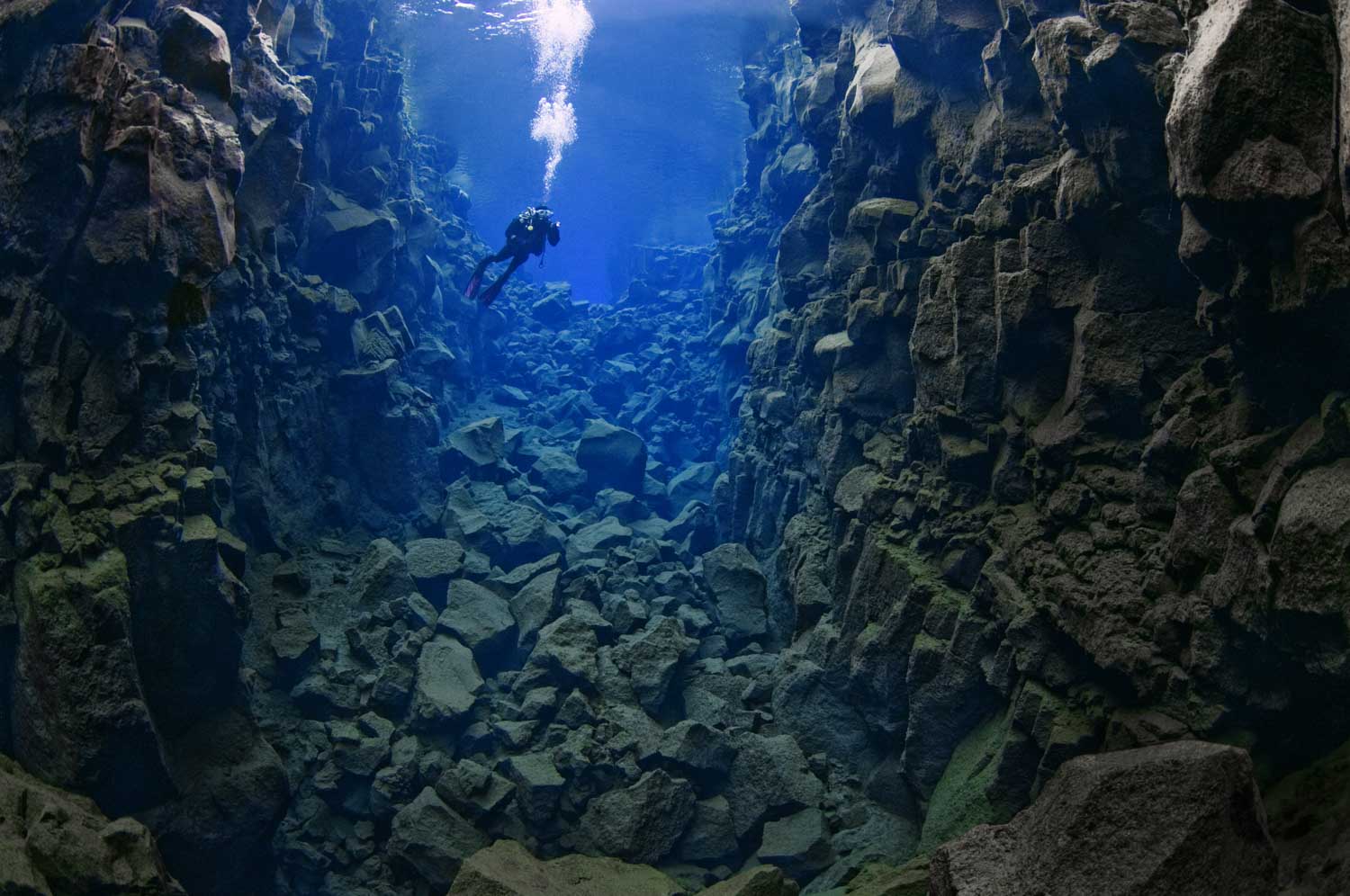
Diving Conditions
The diving conditions at Silfra are as unique as the site itself. The water, originating from glacial meltwater of Langjökull glacier, has been naturally filtered through porous underground lava for up to 100 years, resulting in an underwater visibility exceeding 100 meters. Temperature remains consistently cold, around 2-4°C (36-39°F), necessitating the use of drysuits. Our dives are buoyed by a gentle current that helps us navigate through the fissure’s stunning expanses.
Safety and Certification
Safety is paramount, and divers must have a PADI certification or equivalent, with proof of dry suit experience or a dry suit certification due to the cold water and demanding conditions. It is important for us to always dive within our limits and ensure that our equipment, especially our suits — whether neoprene wetsuit or more commonly, drysuit —, is tested and suitable for these unique diving conditions. While marine life is not the highlight here, the focus on safety and conservation helps preserve the Silfra’s delicate environment for all to enjoy.
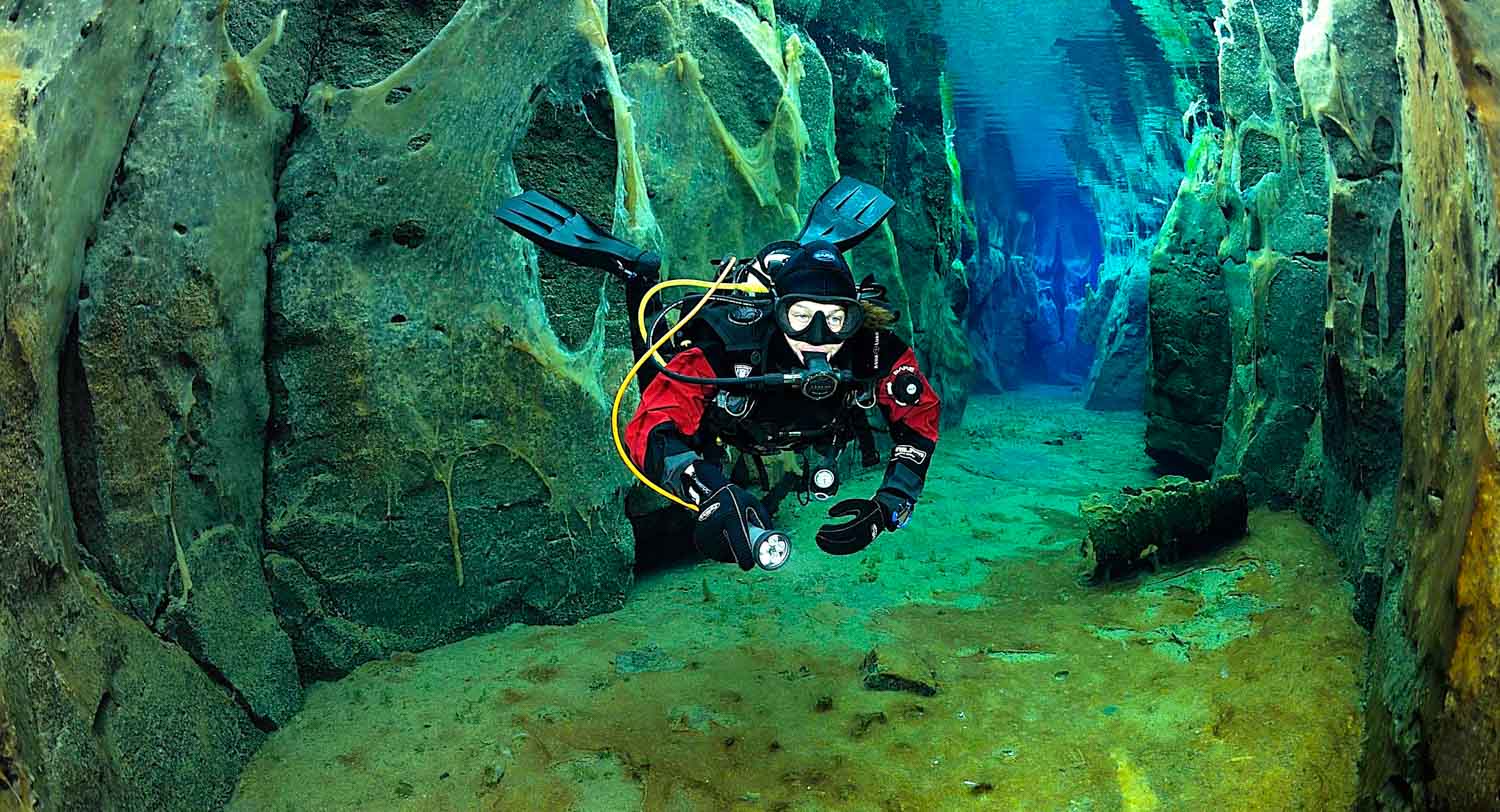
Snorkeling and Swimming Experience
In a snorkeling tour at Silfra Fissure, you will be guided through swimming in Silfra’s remarkable underwater world, ensuring you’re well-prepared for the adventure that awaits. Whether you’re marveling at geological wonders or floating in crystal-clear waters, the experience is nothing short of magical.
Seasonal Considerations
In Silfra, the water temperature is consistently cold, typically between 2-4°C (35-39°F), allowing us to snorkel year-round. However, the best visibility often happens from June to September. We adjust our gear accordingly to ensure comfort despite the cold, and always assess conditions to select the best times for our tours.
Gear and Preparation
Upon arrival at Silfra, you are equipped with high-quality dry suits and snorkeling gear to keep us insulated from the chilly waters. It’s essential to wear warm undergarments and thick socks, and after a thorough safety briefing, we ensure every strap and seal is secure for a safe and dry experience.
- Dry suit: to maintain body heat
- Snorkel and mask: for clear underwater vision
- Fins: to aid swimming with minimal effort
- Gloves and hood: to protect extremities from the cold
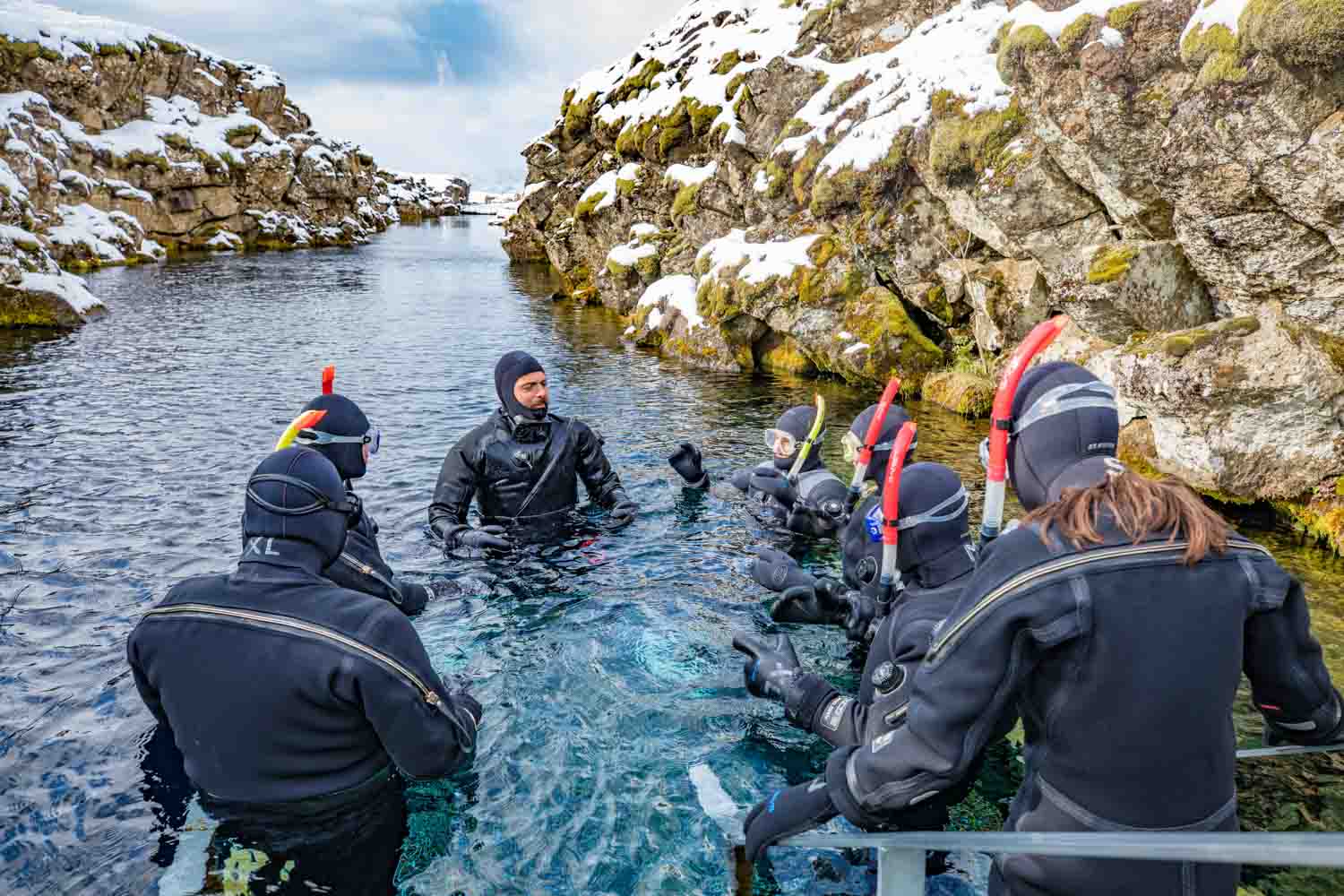
Expectations and Attractions
As you swim through the fissure, spectacular sights unfold before us. The water’s clarity reveals stunning rock formations and surreal scenes. You will glide over deep caverns with visibility often exceeding 100 meters, making it feel like we’re floating in air.
- Silfra Big Crack: the narrowest section of Silfra; where the continental plates are so close you can touch both at once.
- Silfra Hall: a wider section that leads to Silfra Cathedral; renowned for its depth and grandeur.
- Silfra Lagoon: the final section with sandy bottom and a chance to relax and reflect on the journey.
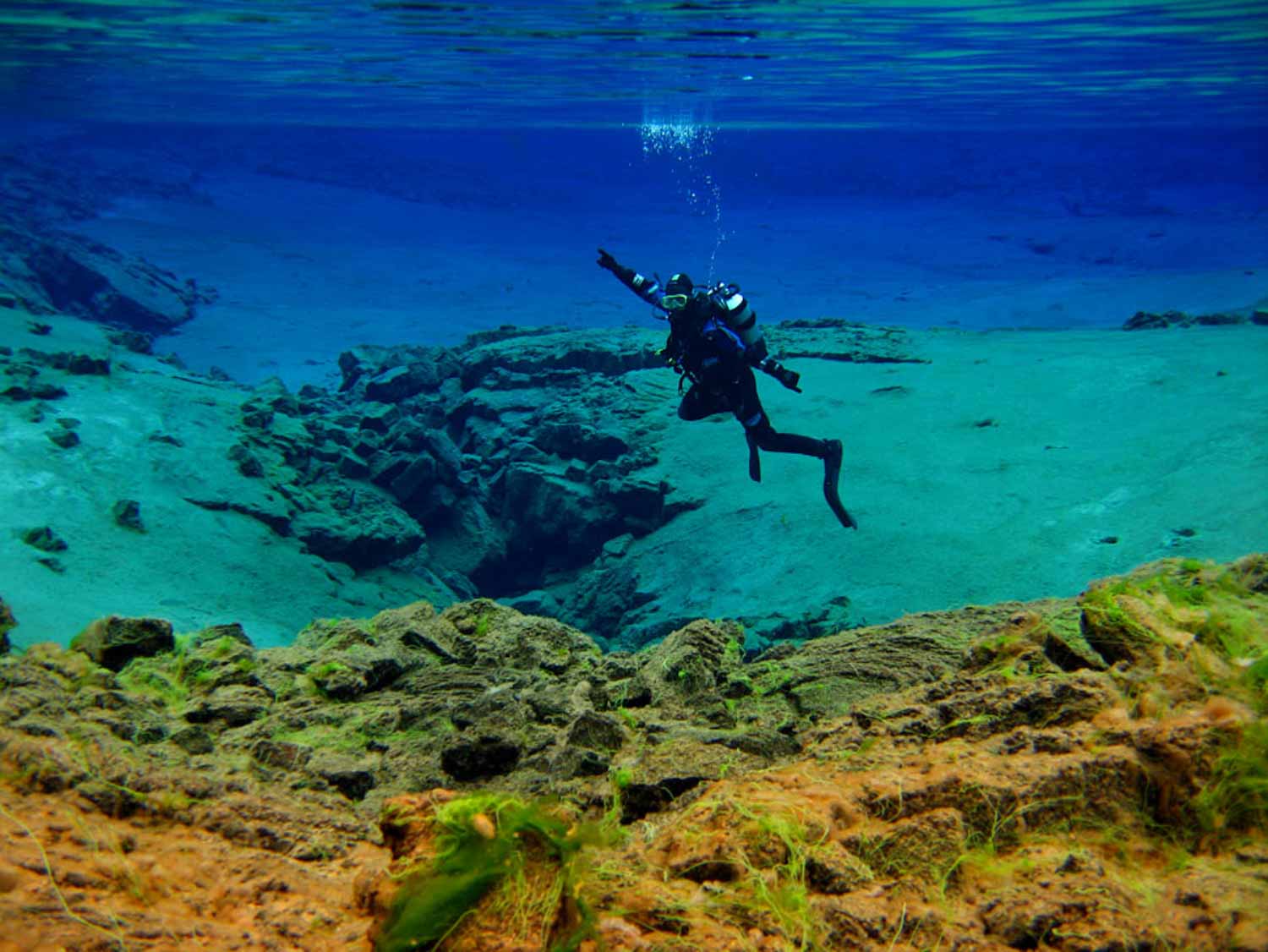
Marine Ecosystem
While there’s a lack of fish in Silfra Fissure, the clarity of the water allows us to spot various forms of marine algae, including the unique ‘troll hair’, which are strands of filamentous green algae. They wave gently in the currents providing a mystical aspect to our swim and enhancing the snorkeling experience with their delicate beauty.
- Troll Hair: soft, green strands of algae found on rocks.
- Clarity: crystal-clear waters for exceptional visibility.
- Gentle Currents: allowing algae to flourish without disturbing our swim.
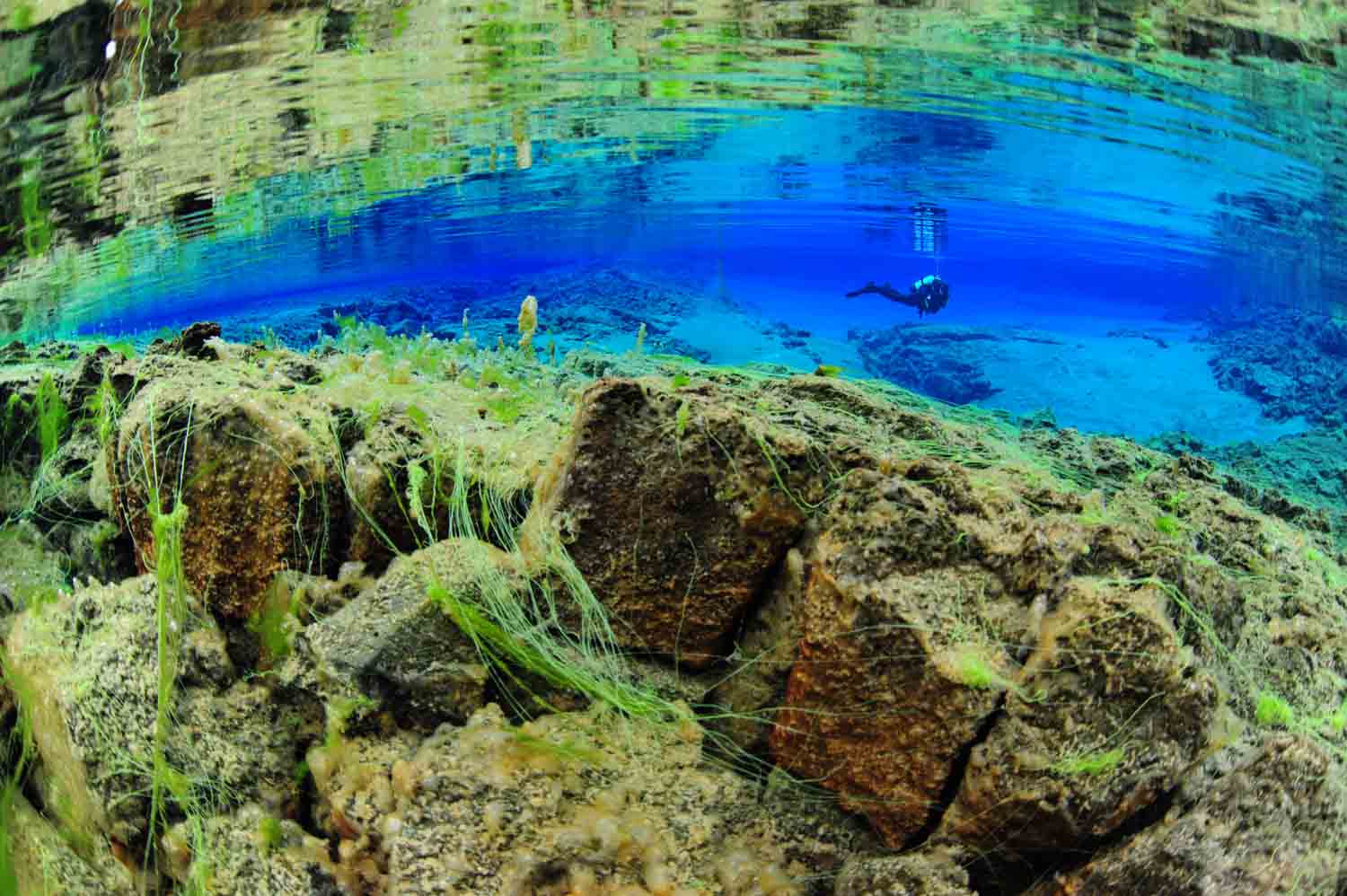
Silfra Fissure’s Nearby Attractions
When exploring the remarkable Silfra Fissure, you will find yourselves surrounded by a plethora of natural wonders. The most iconic of these is undoubtedly Thingvellir National Park, a site of historical significance and natural beauty that complements any visit to Silfra.
Thingvellir National Park
Thingvellir National Park is not only a gateway to the ancient cultural heritage of Iceland but also a celebration of its geological marvels. Less than an hour’s drive east from Reykjavik, it’s a UNESCO World Heritage Site revered for its historical significance as the location of Iceland’s first Parliament, established in the year 930 AD. Amidst the lush parklands and rugged terrain, one can stroll through the Althing, where chieftains once gathered to decree the laws of the land.
The park’s unique tectonic and volcanic environment includes the scenic rift valley that marks the splitting crest of the Mid-Atlantic Ridge. Walking through this dramatic landscape, we’re literally traversing the boundary between the North American and Eurasian tectonic plates. This remarkable natural feature is what gives rise to the astounding clarity of the waters in Silfra Fissure, creating an unparalleled diving and snorkeling experience.
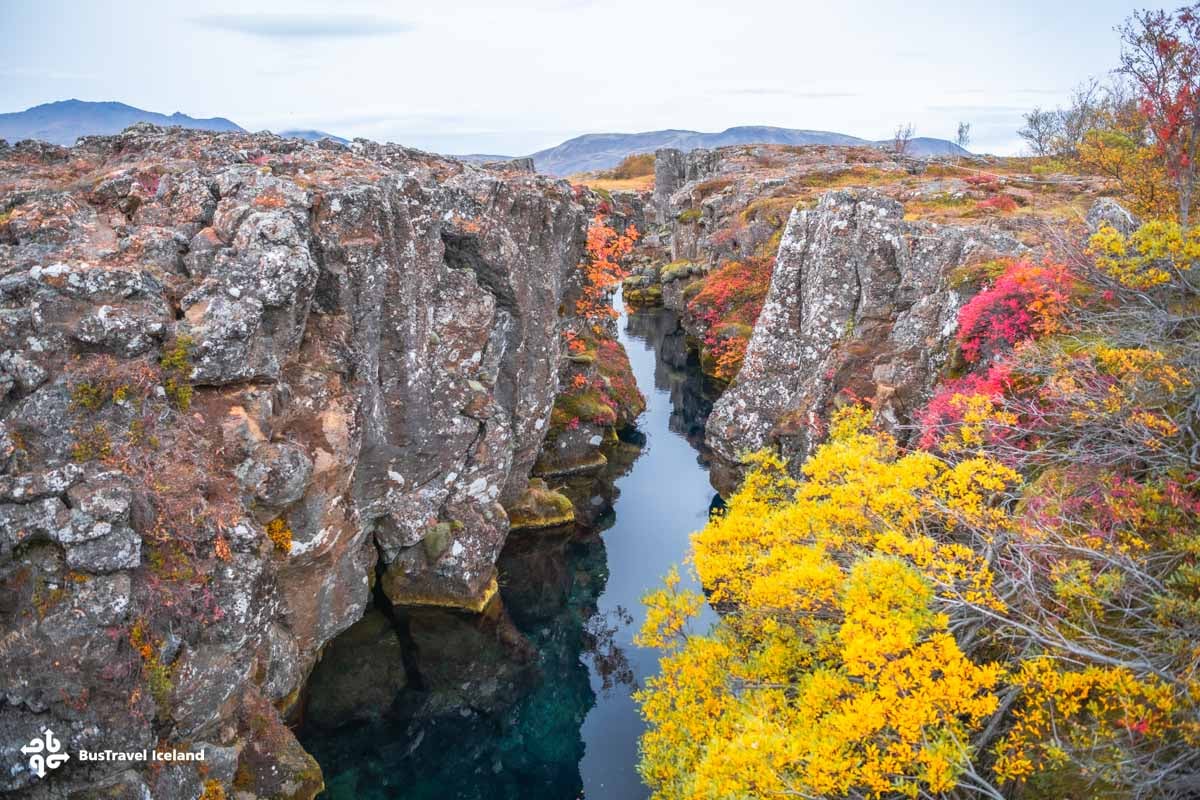
Cultural and Historical Context
Silfra Fissure is located within the Þingvellir National Park, a site of exceptional cultural value to Iceland and a designated UNESCO World Heritage site.
Þingvellir in Icelandic Culture
Þingvellir is a site of tremendous historical significance for us Icelanders. It’s where the Alþingi, one of the earliest parliaments in the world, was established around AD 930. This open-air assembly represents the dawn of our nationhood and is a cherished symbol of our ancient democratic tradition. The cultural impact is still felt strongly today as Þingvellir continues to be a place where you can connect with the Icelandic history and national identity.
The park not only echoes with the voices of our ancestors who once deliberated Iceland’s laws and settled disputes here; it also showcases the dramatic landscape that has shaped our national character. The locals value Þingvellir for its intertwining of Icelandic cultural identity with the tangible physicality of our land. Its presence on the UNESCO World Heritage list since 2004 reaffirms its global significance—an acknowledgement that uplifts our national pride.
In the context of Silfra Fissure, Þingvellir National Park provides a backdrop that is both historically profound and geologically unique. It is an embodiment of our heritage, where geological marvels like Silfra coexist with places of cultural lore, allowing us to dive not only into clear waters but also into the depths of our story as a nation.
